See it, Be it


A stack of old magazines, a pair of scissors, and an old corkboard could be your secret weapons. The items may seem mundane, but with the help of your imagination, you can transform them into pure inspiration. Thousands of people—including successful WeightWatchers Members you're about to meet.—have used vision boarding to improve their lives and achieve more than they thought they could.
Vision boarding helps you answer very personal questions: “How am I stuck? What am I striving for? Who do I want to be?” The result is a visual representation of your goal and how you’ll reach it using photos, words, and objects to evoke a feeling of success. “It’s like making a collage—but you’re injecting your objectives and inner thoughts into it,” says Jessica Masino-Drass, ATR-BC, a board-certified art therapist and founder of wisemindcreations.com.
The real function of a vision board is to keep that goal front and centre in your mind. “If we can see our end goal, it seems more possible to reach it,” explains Laura Berman-Fortgang, a life coach and author of Living Your Best Life.
Another reason to try vision boarding: It could make you feel good. Ongoing research at Drexel University is examining how making art affects the cortisol levels of study participants. Early results suggest that creating art with semifamiliar and structured materials—like things you’d use to create your vision board—has the potential to positively affect your response to stress before you’re consciously aware of it.
“For me, editing the photos down is the most powerful part,” says Aransas Savas, an active vision boarder and member of Weight Watchers corporate innovation team. “There’s something really magical and centring that happens when we look at images and project ourselves into them.”
Ready to try it? Here are real-world examples, as well as some smart ideas to help you get started…
Tips for Better Boarding
Explore multiple dimensions. You aren’t locked in to a flat-board format, says Tess Denton, author of Building a Powerful Vision Board. “You can make a portable vision book with lots of pages that slips into your purse. Or make a mobile that you hang from the ceiling.” Add on meaningful trinkets and textiles, too. “I have a piece of fabric from a childhood dress that I loved tacked to one of my vision boards,” she says.
Make it personal. If your vision board is about losing weight, don’t just cover it with pictures of celery sticks and dumbbells. Focus on your post-goal life, too, says Denton. Maybe you’ll have more energy to play with your kids, so put up a photo of a family having fun. Or maybe you’ll feel comfortable wearing sleeker styles, so look for a picture of a cute pair of skinny jeans.
Face your challenges. Also consider including images of obstacles. Past research from the New York University Department of Psychology has shown that visualizing easy success lowered participants’ motivation to reach a goal, suggesting that imagining an uncertain future could push you to accomplish more.
Do It Digitally
- Pinterest is the most familiar site that allows you to make lots of different boards. In fact, you can even search Pinterest for images of other vision boards to get some inspiration.
- Dreamitalive.com is free, offers inspiring images that you can pull, and connects you to a community of like-minded “dreamers.”
- Wishboard is a free iOS app that lets you create custom backgrounds, write text over photos, add sounds from your iTunes library, and even include voice recordings.
- The free iWish app suggests goals for you (choose from more than 700), which you add to a “To Do” list. Then it helps you create collages and slideshows around each goal.
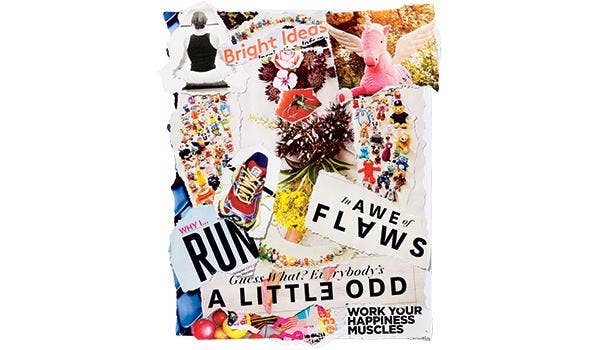
“I remind myself that my board doesn’t need to be perfect, or forever. It lets me discover as I go.” —Aransas Savas, WW Innovation team
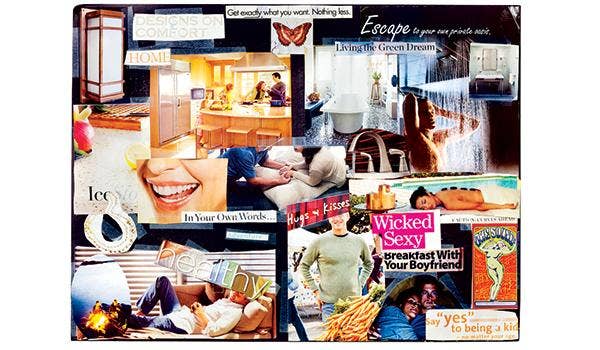
“I created my vision board not as an end goal (or goals), but more for how
I wanted to feel while on my journey.”
—Stacey Newman Weldon, Advertising Director, Weight Watchers Media
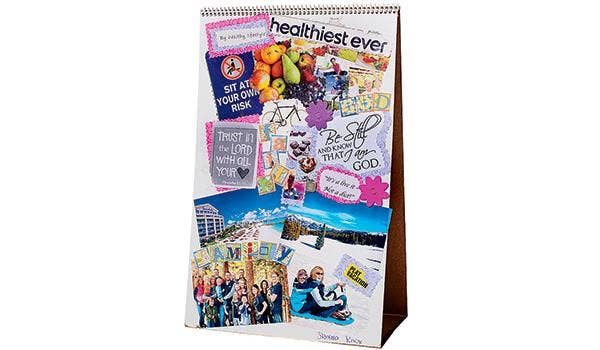
“My vision board inspires me to invest in things that are worth it.”
—Sherma Knox, WW leader
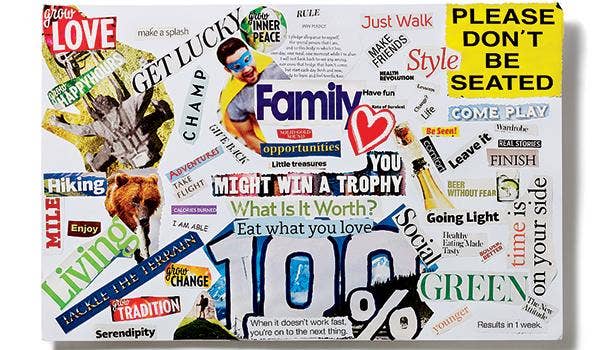
“Creating my vision board was like creating a journey to a lifestyle change.”
—Elena McMichael, WW member
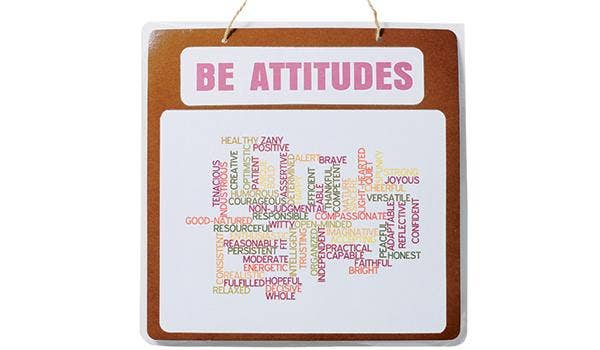
“I believe ‘we are what we repeat,’ and my board keeps my head on straight.”
—Lisa Ledyard, WW leader
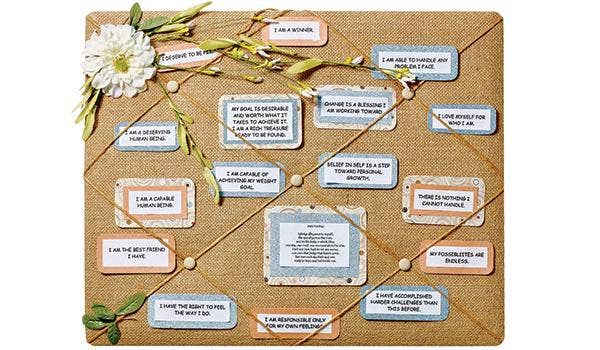
“When I made my board, I used all that WW has taught me over nearly 30 years.”
—Kay Welch, WW lifetime member
